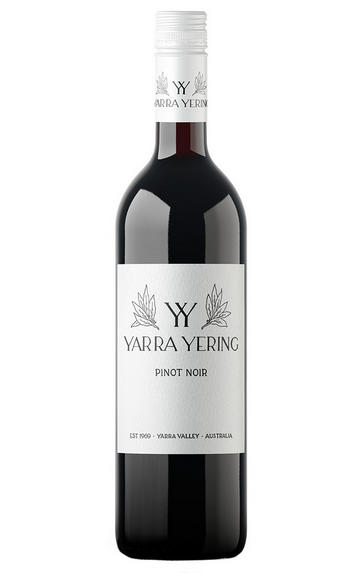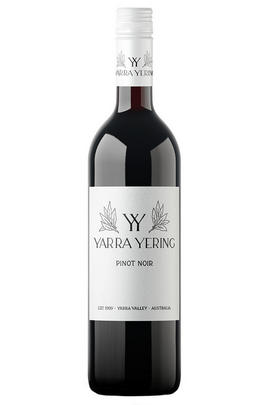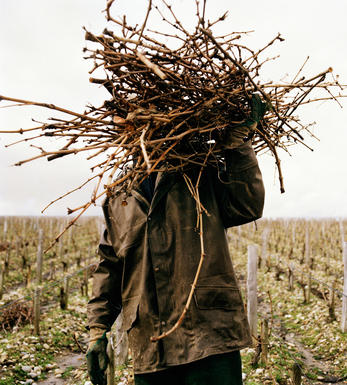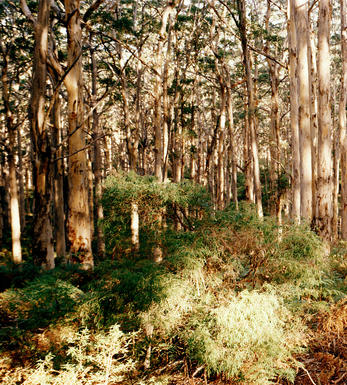
2006 Yarra Yering, Pinot Noir, Yarra Valley, Australia

Critics reviews
Jay S Miller - 25/02/2009
About this WINE

Yarra Yering Vineyards
In 1969 Dr Bailey Carrodus founded Yarra Yering after a lengthy search for the perfect vineyard site. He chose deserted but promising territory near Coldstream in the Yarra Valley, Victoria. Today, Yarra Yering produces concentrated blends dominated by Cabernet Sauvignon, Shiraz and Italian and Portuguese varieties as well as elegant single variety Chardonnay, Pinot Noir and Merlot wines. The wines are in such high demand that the cellar door only opens for two days each year and most of the annual production is sold within the first hour.
Yarra Yering's philosophy is to make classic but elegant wines. They attribute their success to the outstanding quality of fruit that grows on their unique terroir. Despite the widespread Australian trend of the 1960s to adjust soil characteristics, Yarra Yering's vineyards of gravel and clay loam remained untouched, leaving them with pure soils high in natural minerals.
These, combined with the cool climate of the Yarra Valley, low-yielding old vines and no irrigation, have resulted in wines of very concentrated, pure fruit character with high natural acidity, fine minerality and exceptional longevity.
The blended wines are known simply by number. Dry Red No. 1 is Yarra Yering's original, structured Cabernet Sauvignon-dominated blend with Malbec, Merlot and Petit Verdot. Dry Red No. 2 is a supple, Côte-Rôtie-style Shiraz, with a touch of Viognier and Marsanne. The exact proportions of each blend are never revealed.
Single variety wines contain 100% of each named grape. The Underhill Shiraz came into being in the late 1980s after the neighbouring Underhill vineyard was acquired; this is a broad, muscular Shiraz similar to a Rhône Hermitage in style. Both the Pinot Noir and the Chardonnay have beautifully pure fruit supported by perfectly balanced acidity and a subtle use of oak, while the Merlot is a voluptuous rarity indeed, with just a barrel or two made only in years when perfect ripeness has been achieved.
Last but not least is the Potsorts - Yarra Yering's innovative after-dinner speciality, made with indigenous Portuguese varieties and fortified in a Vintage Port style.
The legendary Dr Carrodus sadly passed away in September 2008., leaving us with an Australian icon that delivers very special wines.

Yarra Valley
Victoria’s oldest viticultural area dates back to 1837. Initially it won admiration and trophies for its dry wines before losing out first to the fortifieds from South Australia, and then to the dairy cow. The 1960s saw its revival with Dr Bailey Carrodus founding Yarra Yering in 1969, closely followed by another medic, Dr John Middleton, launching Mount Mary in 1971.
Famous for its Pinot Noir and Chardonnay, the region has attracted interest from sparkling houses, notably Domaine Chandon as well as from one or two corporates; Melbourne’s continued sprawl represents the biggest threat to this Victorian idyll.
The climate is cool maritime (it’s just 15 miles to the ocean), exposed to wind and rain with spring frosts a potential risk. The region’s warmer northerly aspects are preferred for viticulture. The best soils are underpinned by a low vigour, red-brown clay subsoil, while a significant swathe of the region is characterised by vigorous deep-red loam.
Recommended producers: Toolangi, Mount Mary

Pinot Noir
Pinot Noir is probably the most frustrating, and at times infuriating, wine grape in the world. However when it is successful, it can produce some of the most sublime wines known to man. This thin-skinned grape which grows in small, tight bunches performs well on well-drained, deepish limestone based subsoils as are found on Burgundy's Côte d'Or.
Pinot Noir is more susceptible than other varieties to over cropping - concentration and varietal character disappear rapidly if yields are excessive and yields as little as 25hl/ha are the norm for some climats of the Côte d`Or.
Because of the thinness of the skins, Pinot Noir wines are lighter in colour, body and tannins. However the best wines have grip, complexity and an intensity of fruit seldom found in wine from other grapes. Young Pinot Noir can smell almost sweet, redolent with freshly crushed raspberries, cherries and redcurrants. When mature, the best wines develop a sensuous, silky mouth feel with the fruit flavours deepening and gamey "sous-bois" nuances emerging.
The best examples are still found in Burgundy, although Pinot Noir`s key role in Champagne should not be forgotten. It is grown throughout the world with notable success in the Carneros and Russian River Valley districts of California, and the Martinborough and Central Otago regions of New Zealand.


Buying options
Add to wishlist
Description
Yarra Valley (and neighboring Mornington Peninsula) may be Australias prime spots for Pinot Noir and Yarra Yerings 2006 Pinot Noir does not disappoint. Medium ruby-colored, it offers up a super-expressive bouquet of smoke, spice box, roses, black cherry, and raspberry. Silky on the palate, it is intense and full-flavored while remaining elegant. Its flawless balance should allow it to blossom for several more years and drink well through 2018.
Jay S Miller - 25/02/2009
wine at a glance
Delivery and quality guarantee